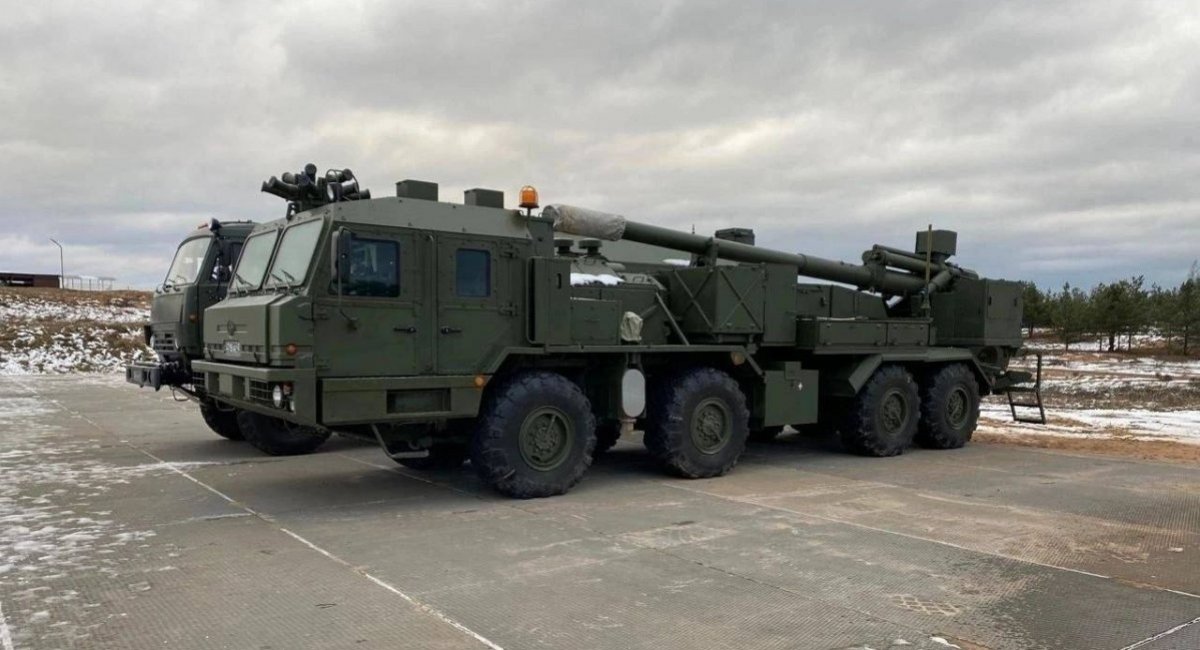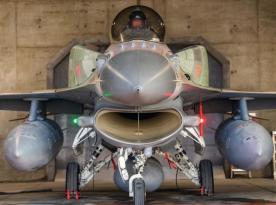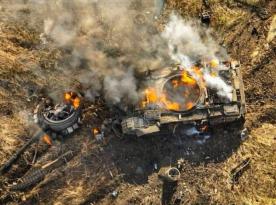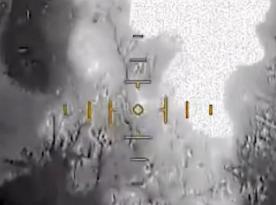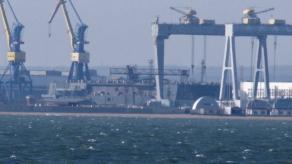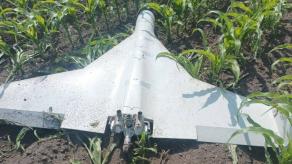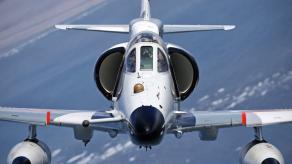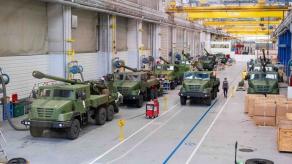A photograph dated February 2025 has surfaced on social media, showing a russian railway train transporting wheeled self-propelled artillery units, either the 2S43 Malva or the 2S44 Giatsint-K. The poor image quality and the shared BAZ-6910-027 Voshchina chassis between both systems make precise identification difficult.

But if this photo indeed depicts the mass production of these wheeled self-propelled guns, several important questions arise.
Read more: Frankensteined: russians Stick Giatsint-B to a BAZ and Use It to Fire Krasnopol Smart Shells
The first concerns the russian military-industrial complex’s capacity to manufacture the Voshchina chassis, as the production of carriers has often become the bottleneck constraining similar projects. For instance, Ukraine faced a shortage of imported Czech-made Tatra chassis for its 2S22 Bohdana artillery systems, which led to the development of the towed variant, Bohdana-B, as an alternative.
The second question relates to howitzers themselves. It remains uncertain where russia is sourcing the main weapon for the 2S43 Malva and 2S44 Giatsint-K. According to The Military Balance 2024, russia had 550 towed Giatsint-B and 250 Msta-B towed howitzers in storage at the start of the previous year.
Some reports suggest the country may have a stockpile of guns for the Giatsint systems, but it is also possible that russia is producing new howitzers of both mentioned types, even though such production has limited capacity.
Ammunition shortages for the Giatsint-S and Giatsint-B remain an issue as well, although russians have claimed that they mainly use guided Krasnopol shells to fire Giatsint-K guns.
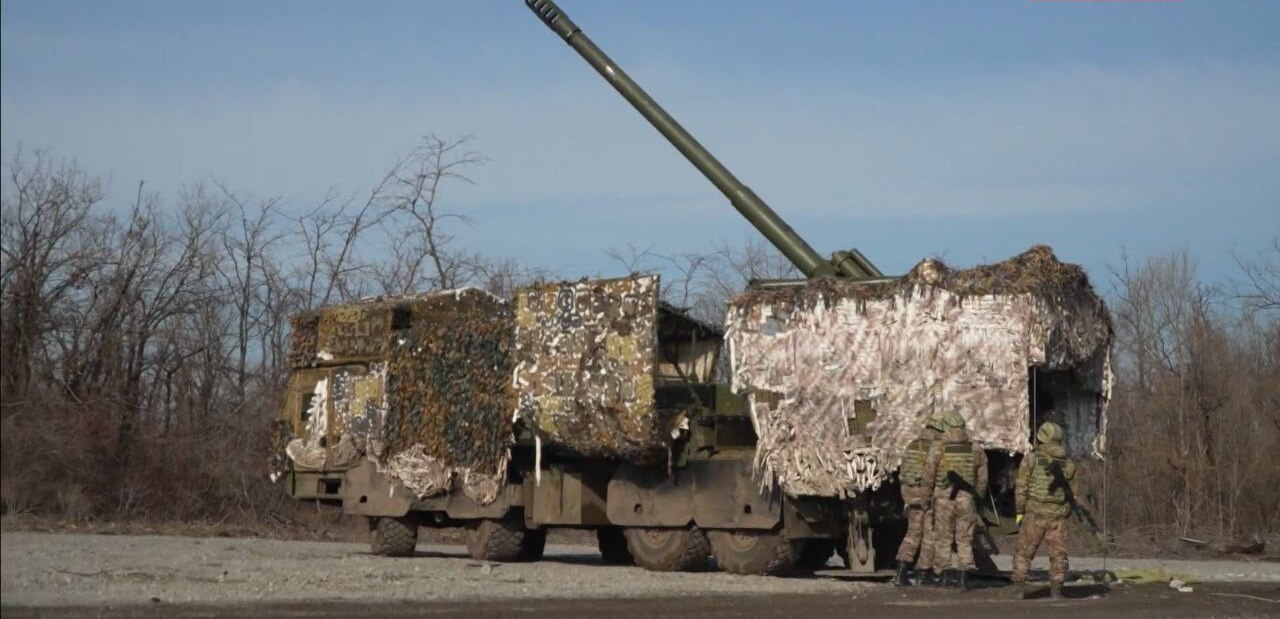
However, the most critical question is rather conceptual: what kind of military doctrine does russia have in mind for using these wheeled self-propelled guns in their operations? Wheeled artillery has not been a traditional component of the russian arsenal, meaning there is no established strategic or tactical framework for its use.
Previously, Defense Express drew attention to a new trend in the russian invasion army to encamp their artillery systems underground during missions and analyzed potential reasons for its emergence.
Read more: M-30 Howitzers Fought in WW2, So Why russians Actively Bring Them Back to Service




